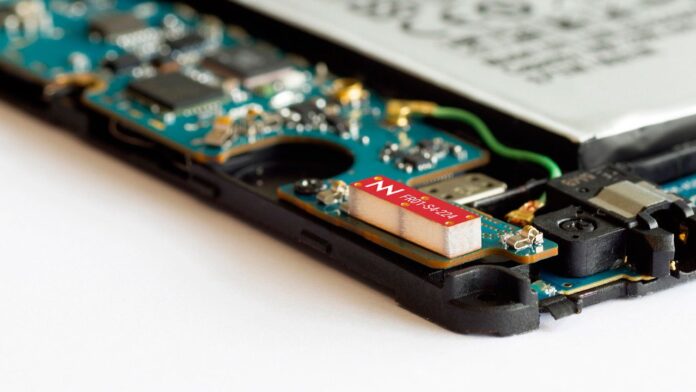Embedded World 2024, Nuremberg: Barcelona based IoT antenna company Ignion has launched a new “AI-powered” antenna integration platform called Oxion to further shorten the design time for wireless IoT devices. The new service integrates “proprietary algorithms” from local Barcelona AI/ML firm Basetis into Ignion’s design and simulation platform, Antenna Intelligence Cloud. It is effectively idiot-proof, the company suggested. “[It] empowers anyone – regardless of their level of RF expertise,” it said.
It added: “Interactive design and… [is] now as easy as building with LEGO.” Like every supplier to the IoT developer market, Ignion is looking to simplify the design and testing process for low-power IoT devices. Its Antenna Intelligence Cloud product works with sundry cellular (NB-IoT through 5G) and non-cellular IoT (including UWB, Wi-Fi, LoRaWAN etc) antennas, and itself allows developers to integrate the company’s proprietary off-the-shelf multiband Virtual Antenna chip technology as a driver for faster, cheaper IoT development.
The original promise of its Antenna Intelligence Cloud, released on AWS a year ago, was to reduce IoT antenna design “from days or weeks to minutes”. Whether the addition of some AI tooling with the Oxion product delivers on that promise or brings development times down even further is not clear, but the message is the same, as it has been since it rebranded from Fractus Antennas in 2021: to reduce costs and accelerate innovation. The AI algorithm draws on antenna modelling “from enabling more than 50 million wireless devices”.
A statement said: “Developers can leverage… AI/ML in real-time to avoid wireless connectivity roadblocks… [They] are no longer solely reliant on what is provided in a static component datasheet as Oxion now provides an interactive digital twin.” The product offers a “real-time drag-and-drop functionality with live performance feedback”, allowing developers to tweak designs with different components, placements, clearances, and PCB sizes.
Ignition said: “Users are presented tailored recommendations… Oxion acts as the developer copilot from concept to production… [It] includes direct access to Ignion’s distribution channels to easily procure [a] bill-of-materials in one go. Multiple projects can be managed by multiple users and compared in a single dashboard. The result is a de-risked design process avoiding endless trial-and-error steps and letting users get wireless connectivity right the first time.”
The platform is available for free. It was funded via a grant from the European Union Innovation Council’s Accelerator scheme. Basetis contributed “expertise in developing proprietary algorithms including active learning that power the real-time results engine”. Ignion is showing the product at Embedded World in Nuremberg this week.
Jaap Groot, chief executive at Ignion, said: “All good ideas deserve optimal wireless connectivity, and with the installed base of connected devices reaching 70 billion in 2026 according to ABI Research, we need to provide easy access and scale our efforts as an industry. It is this spirit of transparency and democratization using the technological evolution of AI which drove us to create Oxion.”
In a supplied quote, Dan Shey, vice president of enabling platforms at ABI Research, said: “Oxion is a unique offering that will save wireless developers time and cost. It is exciting to see Ignion embrace the innovation that AI/ML can deliver when combined with their years of expertise.”

